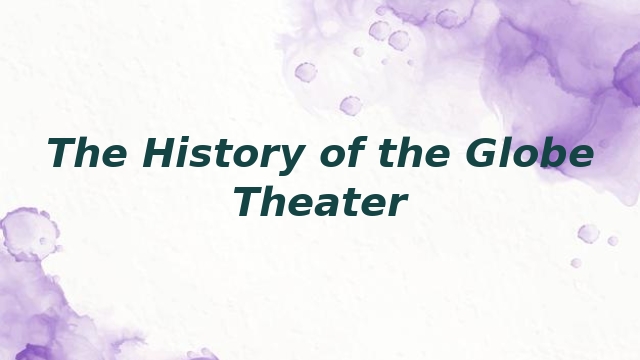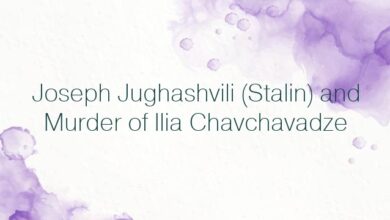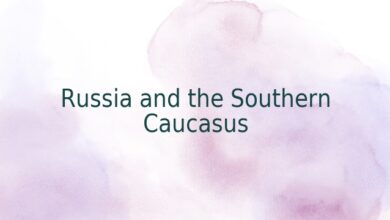
History of Elizabethan London Theaters – including the Globe Theatre
The first proper theater as we know it was called Theatre, built at Shoreditch, London in 1576 and the owner was James Burbage. James Burbage had obtained a 21 year lease with permission to build the first playhouse, aptly named ‘ Theatre ‘. Before this time plays were performed in the courtyard of inns or inn-yards, or sometimes, in the houses of noblemen or in extreme circumstances on open ground. After Theatre, further open air playhouses ( theaters ) opened in the London area, including the Rose Theatre (1587), and the Hope Theatre (1613). The most famous Elizabethan playhouse ( theater ) was the Globe Theatre (1599) built by the company in which Shakespeare had a stake – now often referred to as the Shakespearean Globe. The full history of the Elizabethan Theater with all its theaters, playhouses and inn-yards is available by clicking the Elizabethan Theatre link which provides comprehensive information about Elizabethan Inn-Yards, Theaters and Playhouses.
The Lease of the ‘ Theatre ‘ expires
The 21 year lease for the ground upon which Theatre had been built was due to expire at the end of 1597. The ground landlord of Theater was called Giles Allen. A grasping man, he disapproved of theatrical productions, Theatre in general, and raised the price of the lease of Theatre to an exorbitant level. The troupe failed to agree new terms and when the lease of Theatre finally expired the Chamberlain’s men were forced to move to The Curtain Theater , another public playing house near Theatre. All attempts to negotiate the new tenancy and lease agreement of Theatre failed and Giles Allen planned to pull down Theatre and capitalise on the building materials. But Burbage found a clause in their former lease allowing them to dismantle Theatre building. The players decided to pull down Theatre and transport the timber to a new Theater site on Bankside in Southwark. The work of demolishing Theatre and transporting the timber across the River Thames was noisily undertaken by the Acting Troupe themselves. Giles Allen was absolutely furious. A new theatre would be built learning from both the mistakes and successes of the original ‘ Theatre ‘. The new theater was called The Globe.
The Globe Theater, Bankside in Southwark, London
The Globe, built by carpenter Peter Smith and his workers, was the most magnificent theater that London had ever seen and built in 1597 -1598. This theatre could hold several thousand people! The Globe Theatre didn’t just show plays. It was also reputed to be a brothel and gambling house. It was situated on the South bank of the river Thames in Southwark. The old Globe Theatre was a magnificent amphitheatre, as shown in the picture at the top of the page. Maps of London clearly show the architecture of the Globe Theatre, and these have enabled an approximate picture of the old Globe Theatre to be drawn. Not one inside picture of the old Globe Theatre is in existence, however, a picture of another amphitheatre, the Swan, has survived. The amphitheatres were similar in design, so the picture of the Swan Theatre can be used a good guide to the structure of the old Globe.
Picture of the Swan Theater
Picture of the Swan Theater
The Globe Theater is a huge success
The Globe Theatre was a huge success and as it had been built in close proximity to the Bear Garden. The profits of the Bear Garden slumped and in 1614 Henslowe and Edward Alleyn (the most famous actor in Elizabethan England ) had it demolished and replaced with a new playhouse which they called The Hope Theatre (aptly named!). Edward Alleyn returned to the stage in an attempt to lure the crowds from The Globe Theatre.
The Globe Theater – the Plays
Plays were big!! There was money to be made!! There was a constant demand for new material!! Rivalry between Theatres Playhouses was enormous!! As soon as a play had been written it was immediately produced – printing followed productions! So the actors initially used ‘foul papers’ or prompts. Rival theater companies would send their members to attend plays to produce unauthorised copies of plays – notes were made and copied as quickly as possible. In Shakespeare’s time copyright did not exist. Alternative versions of Shakespearean plays were produced! These unauthorised and inferior text copies of Shakespeare’s plays are called Quarto Texts. The success of the Elizabethan theaters, including the Globe, was such that other forms of Elizabethan entertainment were being seriously affected. In 1591 the growing popularity of theatres led to a law closing all theaters on Thursdays so that the bull and bear bating industries would not be neglected!
The Globe Theater – the Event
Days out at the Globe Theater would have been an exciting event. The grounds surrounding the Globe Theater would have been bustling with people. There would be Stalls selling merchandise and refreshments creating a market day atmosphere. Non playgoers would flock to the Globe Theater to go to the market stalls and ‘soak in ‘ the holiday-like atmosphere. The Globe would have particularly attracted young people and the were many complaints of apprentices avoiding work in order to go to Theater. A trumpet was sounded to announce to people that the play was about to begin at the Globe Theatre in order for people to take their final places.
Elizabethan Advertising!
Towering above the Globe was a small tower with a flag pole. Flags were used as a form of Elizabethan Advertising! Flags were erected on the day of the performance which sometimes displayed a picture advertising the next play to be performed. Colour coding was also used – a black flag meant a tragedy , white a comedy and red a history. Elizabethan and Shakespearean Advertising !
The Globe Theatre’s crest and motto
To announce the arrival of the new playhouse, the Lord Chamberlain’s Men flew a flag featuring the figure of Hercules carrying a Globe on his shoulders to announce the imminent performance of their first performance, Julius Caesar. This theme was displayed above the main entrance of the Globe Theater. A crest displaying Hercules bearing the globe on his shoulders together with the motto “Totus mundus
agit histrionem” ( the whole world is a playhouse ). This phrase was slightly re-worded in the William Shakespeare play As You Like It – “All the world’s a stage” which was performed at the Globe Theater.
The Globe Theater – the Productions
The purpose built Globe theatre allowed stage productions to become quite sophisticated with the use of massive props such as fully working canons, although it would of course had to be left on stage for the entire performance of the play. Special effects at the Globe were also a spectacular addition at Theater allowing for smoke effects, the firing of a real canon, fireworks (for dramatic battle scenes) and spectacular ‘flying’ entrances from the rigging in the ‘heavens’. The stage floor had trap-doors allowing for additional surprising incidents. Music was another addition to the Globe productions. It was no wonder that the Globe Theater and this form of Elizabethan entertainment was so popular. The sight of Shakespearean actors apparently flying must have been quite amazing to the diiscerning Elizabethan Theater audiences.
The Globe Theater – the Actors
The Globe Theater audience never had time to get bored. In just two weeks Elizabethan theaters could often present “eleven performances of ten different plays”. The Shakespearean Actors generally only got their lines as the play was in progress. Parts were often allocated on the day of the performance. Many times the actors didn’t even get their own lines. They did “cue acting “, which meant that there was a person backstage who whispered the lines to the actor just before he was going to say them. This rapid turnover led to another technique called “ cue scripting ”, where where each actor was given only his own lines. The complete scene of the play was not explained to the actors until it was actually being performed. This technique allowed for zero rehearsal time, thus enabling a fast turnover in terms of new productions at the Globe Theater and a huge portfolio of different roles. There were no actresses. Female characters had to be played by young boys. The acting profession was not a credible one and it was unthinkable that any woman would appear in a play. Two of the most notable actors of the Elizabethan era were Edward Alleyn and Will Kempe. Edward Alleyn became immensely wealthy due to stake holding in a theatre company (the Admiral’s men).
Click here for information and Biographies of Globe Theatre and major Elizabethan Actors
The Globe Theater audiences
The Elizabethan general public (the Commoners) referred to as groundlings would pay 1 penny to stand in the ‘Pit’ of the Globe Theater. The gentry would pay to sit in the galleries often using cushions for comfort! Rich nobles could watch the play from a chair set on the side of the Globe stage itself. Theatre performances were held in the afternoon, because, of course, there was no artificial lighting. Men and women attended plays, but often the prosperous women would wear a mask to disguise their identity. The plays were extremely popular and attracted vast audiences to the Globe. The audiences only dropped during outbreaks of the bubonic plague, which was unfortunately an all too common occurrence during the Elizabethan era. This happened in 1593, 1603 and 1608 when all theaters were closed due to the Bubonic Plague (The Black Death). The Shakespearean actors were therefore temporary out of work and left London to stay in other parts of England. William Shakespeare no doubt used these periods of closure to write more plays and go home to Stratford.
The ‘Box Office’
Globe audiences had to put one penny in a box by the door which would pay for a view of the play by standing on the ground, in front of the stage. To sit on the first gallery would cost another penny in the box which was held by a collector on the front of the stairs. To sit on the second gallery, you put another penny in the box held by the man at the second flight of stairs. Then when the show started, the men went and put the boxes in a room backstage – the Elizabethan box office. Profits there were shared between members of the Globe company as such and the owners of Theatre (called “housekeepers”), who included the James and his son the actor Richard Burbage and five others, one of them was William Shakespeare. Shakespeare received approximately 10% of the profit although he had a 20% stake holding in the troupe as James Burbage owned the lease for the land that the Globe theater was built on.
Shakespeare the Actor
William Shakespeare had a stake holding in the Globe Theatre and also acted in some of the productions of the plays. It is not known exactly how many roles Shakespeare played himself, although we do have some documented information. Shakespeare had began his career on the stage by 1592, because there is a surviving document by Robert Greene’ Groatsworth. It is probable that Shakespeare played the title role in Edward I (a play by Edward Peele) in 1593. It is also assumed that Shakespeare played smaller roles in a variety of his own plays, including As You Like It (Adam), Macbeth (King Duncan), Henry IV (King Henry), and Hamlet (Hamlet’s father). Shakespeare’s first biographer, Nicholas Rowe, referring to a role by William Shakespeare as “the Ghost in his own Hamlet” and was “the top of his performance”.
Plays and Propaganda
Strolling players of actors had been popular for centuries in England but as there were no initial regulations it was possible to use plays as a vehicle for propaganda. Plays could be used to encourage criticism of the state and freedom of thought in terms of both religion and politics. Queen Elizabeth, ever concerned about her popularity with the people, realised that although it would be prudent to enforce some regulations that it would be foolhardy to apply too many restrictions. She had controlled the troupes of strolling players in 1572 by granting a license by royal patent to organised acting companies, thus initiating legitimate troupes such as Earl of Leicester’s Men. Any Elizabethan players might at any time be required to show their credentials. And under Queen Elizabeth political and religious subjects were forbidden on the stage. Plays still however often led to heated debates in Theaters and arguments erupted. The subject matter of the plays would often be vulgar and bawdy. The behaviour of some the audience was the worse! Theatres didn’t just show plays. Some also served as a bear pit, brothel and gambling house. Crime increased at Theaters and following the performances the crowds were noisy and unruly. The vast crowds and the popularity of the London Theaters needed some additional controls. Published plays soon required a licence, which provided a form of censorship by the state.
Theaters are banned from London City Limits
The objections to Theaters escalated and the Church, London Officials and respectable citizens raised even more objections to Theatres. Theaters were not only used to show plays. There was gambling and in some there was even bear baiting. Not only were there objections about the bawdy nature of some of the plays, the rise in crime but there was also the real risk of the crowded theatres encouraging the spread of the plague. The reputation of actors was remained disreputable, a legacy from the rogues and vagabonds who had previously roamed the country putting on plays and their classification as “vagabonds and sturdy beggars,” in a 1572 act of Parliament. In December 1574 the Common Council of London, under the influences of puritanical factions, issued a statement describing:
” great disorder rampant in the city by the inordinate haunting of great multitudes of people, especially youth, to plays, interludes, namely occasion of frays and quarrels, evil practices of incontinency in great inns having chambers and secret places adjoning to their open stages and galleries, inveigling and alluring of maids, especially of orphans and good citizens’ children under age, to privy and unmeet contracts, the publishing of unchaste, uncomely, and unshamefast speeches and doings . . . uttering of popular, busy, and seditious matters, and many other corruptions of youth and other enormities . . . [Thus] from henceforth no play, comedy, tragedy, interlude, not public show shall be openly played or showed within the liberties of the City . . . and that no innkeeper, tavernkeeper, nor other person whatsoever within the liberties of this City shall openly show or play . . . any interlude, comedy, tragedy, matter, or show which shall not be first perused and allowed . . . “
The outcry continued and grew so much that in 1596 London’s authorities banned the public presentation of plays and all theaters within the city limits of London. All theaters located in the City were forced to move to the South side of the River Thames.
The Globe Theater – the Fire and the re-building of the Globe Theatre
The Globe was only in use until 1613, when on June 29 a fire broke out at the Globe Theatre . The canon used for special effects, such as heralding great entrances, was loaded with gunpowder and wadding. The thatched roof caught on fire and the Globe Theatre burned to the ground. It is not known whether there were any casualties but there must have been some panic. In 1614 the Globe Theatre was rebuilt (referred to as Globe 2).
The End of the Globe Theater – the Puritans
In 1642, under the force of the Puritans, the English Parliament issued an ordinance suppressing all stage plays in Theatres. The Puritans were a religious faction and the term came into general usage at the end of the reign of Queen Mary I (Bloody Mary). A broad definition of the puritans is ‘those who wanted to completely change the Church of England, with its Roman Catholic type of structure and traditions, for another reformed and plain church model’. This strict religious view spread to encompass many social activities within England moving to a stricter code of conduct which deplored any kind of finery or flippant behaviours. 1642 was a truly eventful year for England. The Puritans, lead by Oliver Cromwell, who had been elected to Parliament came into total conflict with the Royalists lead by King Charles I. The English Civil war broke out. In 1644 the Globe Theatre was demolished by the Puritans. In 1647 Even stricter rules were passed regarding stage plays and theatres. This culminated in 1648 when all playhouses were ordered to be pulled down. All players were to be seized and whipped, and anyone caught attending a play to be fined five shillings. In 1649 the Civil War finally lead to the terrible execution of King Charles I . In 1653 Oliver Cromwell becomes Lord Protector of England. In 1658 Cromwell dies and the power of the Puritan starts to decline. In 1660 King Charles II is restored to the throne of England. With the Restoration of the English monarchy and , and the demise in the power of the Puritans in 1660 Theatres finally open again. But the Globe is never re-built. Please click the appropriate link to access a Timeline of the old Globe Theatre.
The site of the old Globe theatre was rediscovered in the 20th century and a reconstruction of a New Globe Theatre has been built near the spot.





